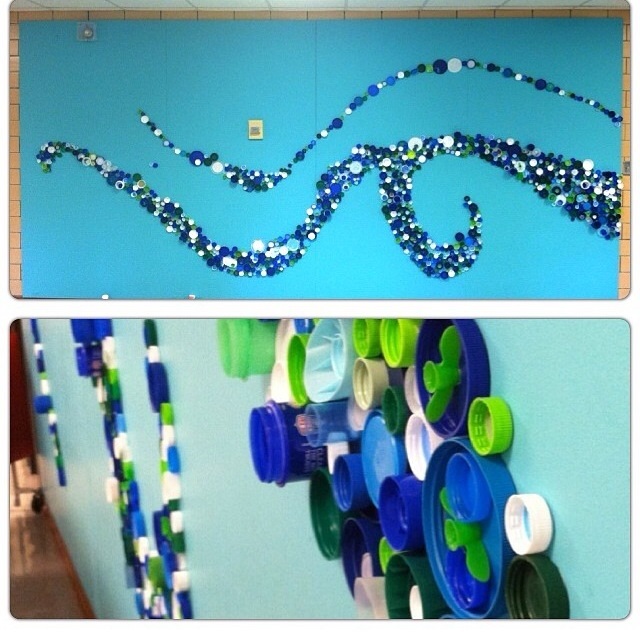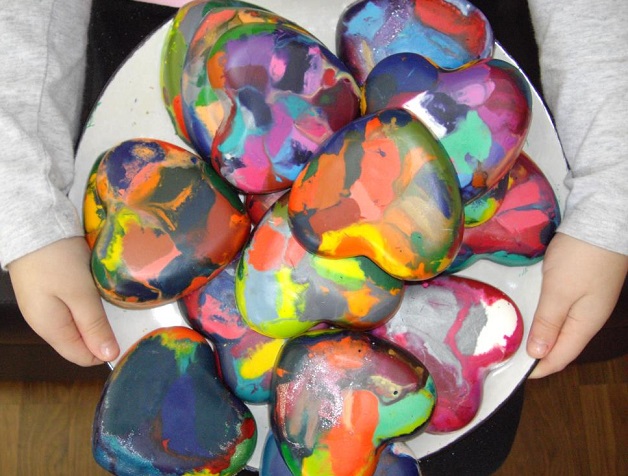
According to the
Environmental Protection Agency (EPA), Americans generated, “254 million tons of trash and recycled and composted almost 87 million tons of this material, equivalent to a 34.3 percent recycling rate, in 2013. On average, we recycled and composted 1.51 pounds of our individual waste generation of 4.40 pounds per person per day.”
That’s fine, I guess, but we can do better. By demanding companies take responsibility for their products and the waste they generate, by staying on top of our community’s recycling programs and by doing everything we can to reduce our individual waste, together we can make a difference.
Here are some things you may not about recycling that will help you make a difference today:
1. Take the caps off your plastic bottles. Most of us are required to do this when our plastic bottles will be recycled at the curb, but do you know why it’s a requirement? I had always thought it was because plastic caps are generally made from a different plastic than the bottles they are put on. In general, this is true; different plastics melt at different temperatures during the recycling process so they need to be separated. But the reason I was told was that facilities prefer they are removed, otherwise when the plastics are bundled together in bales, the pressure forces a cap to shoot off the bottle and can be hazardous for the workers in the facility.
2. Brita water filters can be recycled. Preserve, the company that makes a line of 100-percent recycled items, has teamed up with Brita to recycle used water filters. Once recycled, the filters are then used to make Preserve razors, toothbrushes, cups and even cutting boards. Whole Foods has collection bins, or check with Preserve for
more locations. In 2013, Preserve collected over 250,000 pounds of #5 plastic through its retail collection program.
3. Food waste is a huge problem, but it doesn’t have to be. About 96 percent of food that could be composted ends up in landfills and incinerators, according to the
EPA. Check with your local community to see if there is a place to bring your food waste – or get
your own compost bin! Composting is easy and the rewards are priceless.
 4. Your old crayons can be recycled.
4. Your old crayons can be recycled. We save our crayon stubs to make them into hearts for the girls’ classmates’ Valentines. For more information on how you could recycle your own crayons, check out
this article on RecycleNation. Or you could send them, at your expense, to
Crazy Crayons, where they will be recycled into new crayons for you.
5. You can recycle the plastic film that comes on your paper towels. Plastic wrap around gift wrapping, plastic sandwich bags, the plastic film that comes on your toilet paper, plastic bags from the grocery store and so on, all of these can be recycled. First, check with your local recycling program. I was pleasantly surprised to learn that mine does take plastic film in my curbside recycling. If yours doesn’t, go to
http://plasticfilmrecycling.org/ and find a drop off location near you.
 According to the Environmental Protection Agency (EPA), Americans generated, “254 million tons of trash and recycled and composted almost 87 million tons of this material, equivalent to a 34.3 percent recycling rate, in 2013. On average, we recycled and composted 1.51 pounds of our individual waste generation of 4.40 pounds per person per day.”
That’s fine, I guess, but we can do better. By demanding companies take responsibility for their products and the waste they generate, by staying on top of our community’s recycling programs and by doing everything we can to reduce our individual waste, together we can make a difference.
Here are some things you may not about recycling that will help you make a difference today:
1. Take the caps off your plastic bottles. Most of us are required to do this when our plastic bottles will be recycled at the curb, but do you know why it’s a requirement? I had always thought it was because plastic caps are generally made from a different plastic than the bottles they are put on. In general, this is true; different plastics melt at different temperatures during the recycling process so they need to be separated. But the reason I was told was that facilities prefer they are removed, otherwise when the plastics are bundled together in bales, the pressure forces a cap to shoot off the bottle and can be hazardous for the workers in the facility.
2. Brita water filters can be recycled. Preserve, the company that makes a line of 100-percent recycled items, has teamed up with Brita to recycle used water filters. Once recycled, the filters are then used to make Preserve razors, toothbrushes, cups and even cutting boards. Whole Foods has collection bins, or check with Preserve for more locations. In 2013, Preserve collected over 250,000 pounds of #5 plastic through its retail collection program.
3. Food waste is a huge problem, but it doesn’t have to be. About 96 percent of food that could be composted ends up in landfills and incinerators, according to the EPA. Check with your local community to see if there is a place to bring your food waste – or get your own compost bin! Composting is easy and the rewards are priceless.
According to the Environmental Protection Agency (EPA), Americans generated, “254 million tons of trash and recycled and composted almost 87 million tons of this material, equivalent to a 34.3 percent recycling rate, in 2013. On average, we recycled and composted 1.51 pounds of our individual waste generation of 4.40 pounds per person per day.”
That’s fine, I guess, but we can do better. By demanding companies take responsibility for their products and the waste they generate, by staying on top of our community’s recycling programs and by doing everything we can to reduce our individual waste, together we can make a difference.
Here are some things you may not about recycling that will help you make a difference today:
1. Take the caps off your plastic bottles. Most of us are required to do this when our plastic bottles will be recycled at the curb, but do you know why it’s a requirement? I had always thought it was because plastic caps are generally made from a different plastic than the bottles they are put on. In general, this is true; different plastics melt at different temperatures during the recycling process so they need to be separated. But the reason I was told was that facilities prefer they are removed, otherwise when the plastics are bundled together in bales, the pressure forces a cap to shoot off the bottle and can be hazardous for the workers in the facility.
2. Brita water filters can be recycled. Preserve, the company that makes a line of 100-percent recycled items, has teamed up with Brita to recycle used water filters. Once recycled, the filters are then used to make Preserve razors, toothbrushes, cups and even cutting boards. Whole Foods has collection bins, or check with Preserve for more locations. In 2013, Preserve collected over 250,000 pounds of #5 plastic through its retail collection program.
3. Food waste is a huge problem, but it doesn’t have to be. About 96 percent of food that could be composted ends up in landfills and incinerators, according to the EPA. Check with your local community to see if there is a place to bring your food waste – or get your own compost bin! Composting is easy and the rewards are priceless.
 4. Your old crayons can be recycled. We save our crayon stubs to make them into hearts for the girls’ classmates’ Valentines. For more information on how you could recycle your own crayons, check out this article on RecycleNation. Or you could send them, at your expense, to Crazy Crayons, where they will be recycled into new crayons for you.
5. You can recycle the plastic film that comes on your paper towels. Plastic wrap around gift wrapping, plastic sandwich bags, the plastic film that comes on your toilet paper, plastic bags from the grocery store and so on, all of these can be recycled. First, check with your local recycling program. I was pleasantly surprised to learn that mine does take plastic film in my curbside recycling. If yours doesn’t, go to http://plasticfilmrecycling.org/ and find a drop off location near you.
4. Your old crayons can be recycled. We save our crayon stubs to make them into hearts for the girls’ classmates’ Valentines. For more information on how you could recycle your own crayons, check out this article on RecycleNation. Or you could send them, at your expense, to Crazy Crayons, where they will be recycled into new crayons for you.
5. You can recycle the plastic film that comes on your paper towels. Plastic wrap around gift wrapping, plastic sandwich bags, the plastic film that comes on your toilet paper, plastic bags from the grocery store and so on, all of these can be recycled. First, check with your local recycling program. I was pleasantly surprised to learn that mine does take plastic film in my curbside recycling. If yours doesn’t, go to http://plasticfilmrecycling.org/ and find a drop off location near you.